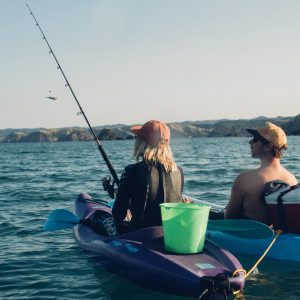This article was written prior to the submission being completed and sent to Fisheries New Zealand. To see the current discussion on changes to recreational daily bag limits please read the submission in full here.
Without exception, recreational fishers attending meetings with LegaSea have strongly supported conserving fish for future generations.

Tarakihi management is currently being reviewed and recreational fishing is under the spotlight. Collectively we represent less than 5% of all annual tarakihi catch, that is because our catches have diminished over time as stocks have declined and moved further offshore. Now they are targeting your take-home bag limit.
When it comes to catches there are two elements to the allowance for recreational fishing. There is the overall tonnage that the Minister sets aside to cover recreational fishing for that species in the management area. The other is the individual bag limit, this one specifies the maximum take-home catch per person.
Currently, the Ministry is proposing to cut the tonnage allowances in each management area by between 51 and 80%. There has never been any allowance for Area 7, in the Marlborough Sounds and Cook Strait, so Ministry proposes a new allowance of 23 tonnes. This aspect is important because this allowance is what is shared amongst all fishers.
On the surface, these cuts might seem reasonable, but the trap is that the new allowances will be set at recent catch estimates, which have been depressed due to low abundance. If it is set too low, as in Snapper 1 in 2013, daily bag limits are cut to ensure overall catch remains within that allowance. As the tarakihi fishery rebuilds it may become increasingly difficult to fish at the new level and further bag limit cuts could be proposed at the next stock review.
Ministry is also proposing to take tarakihi out of the mixed bag limit and establish a new daily limit for each recreational fisher. There is only one reason for doing so, that is to further reduce recreational take-home catch of tarakihi so it is no surprise other sectors favour this strategy.
Tarakihi is one species well suited to be part of the 20 per person daily bag limit (DBL) in the north and 15 of the 30 DBL in the south. In the north, it is often caught with other species so tarakihi catches seldom end up at 20. In the south, tarakihi is one of the more accessible species and 15 is not a commercial quantity, especially when you consider that the amount of meat from a tarakihi fillet is less than most other species.
The Ministry’s own estimates show that on more than 90% of trips people are not taking home 20 tarakihi, and the people that do so are wanting to feed their family fresh fish.
From our perspective, any bag limit reductions will have no effect on the rate of rebuild given we are currently taking less than 5% of overall catch. If there is no evidence that recreational catch is causing local depletion there seems little benefit from reducing catch limits, it is merely a Ministry mind-set that everyone needs to ‘share the pain’ even if we are not responsible for the depletion.
You can help rescue our tarakihi. Please visit the website, read the data, follow the 1,2 3 steps and ask the Minister to take Time Out for Tarakihi.





